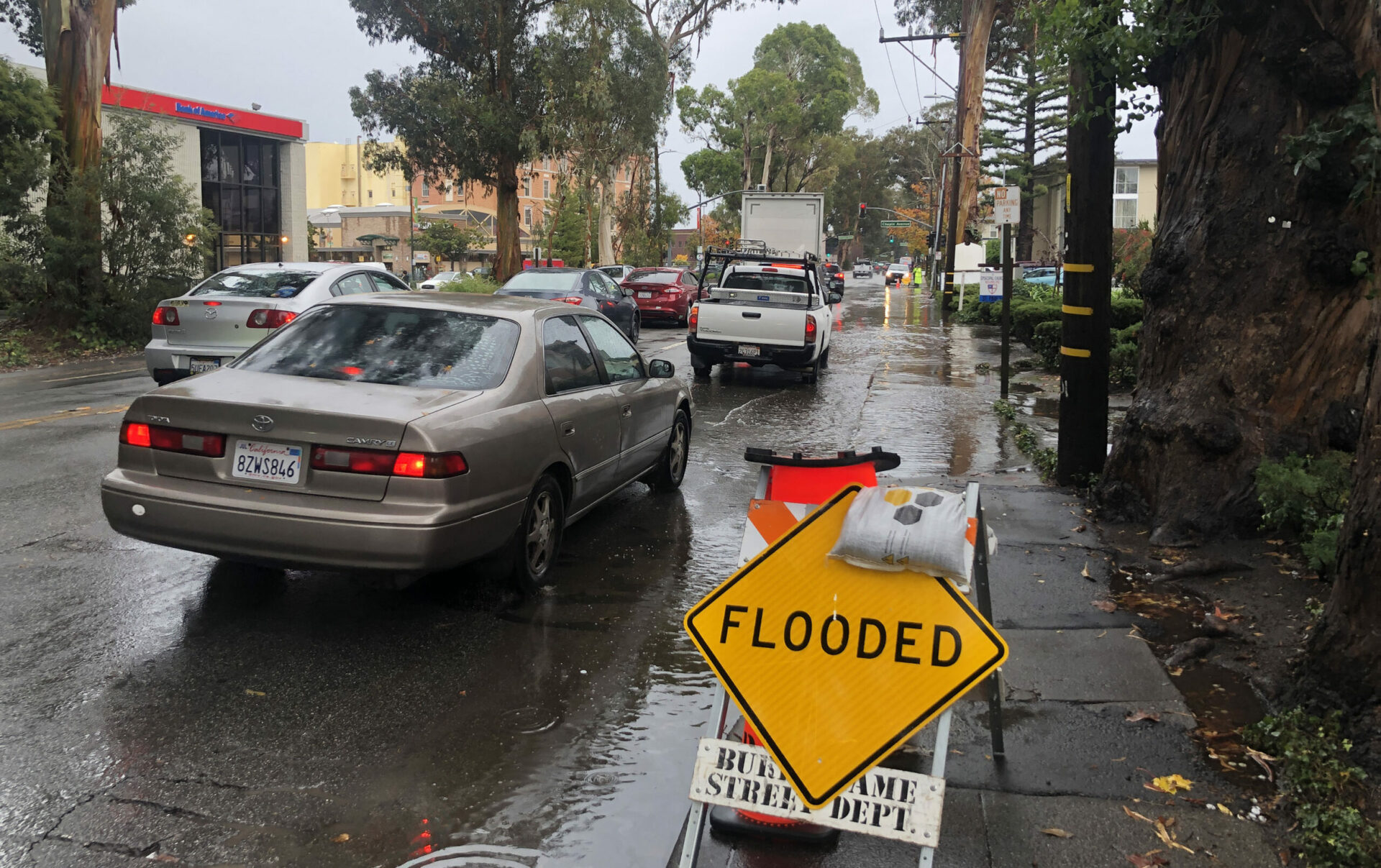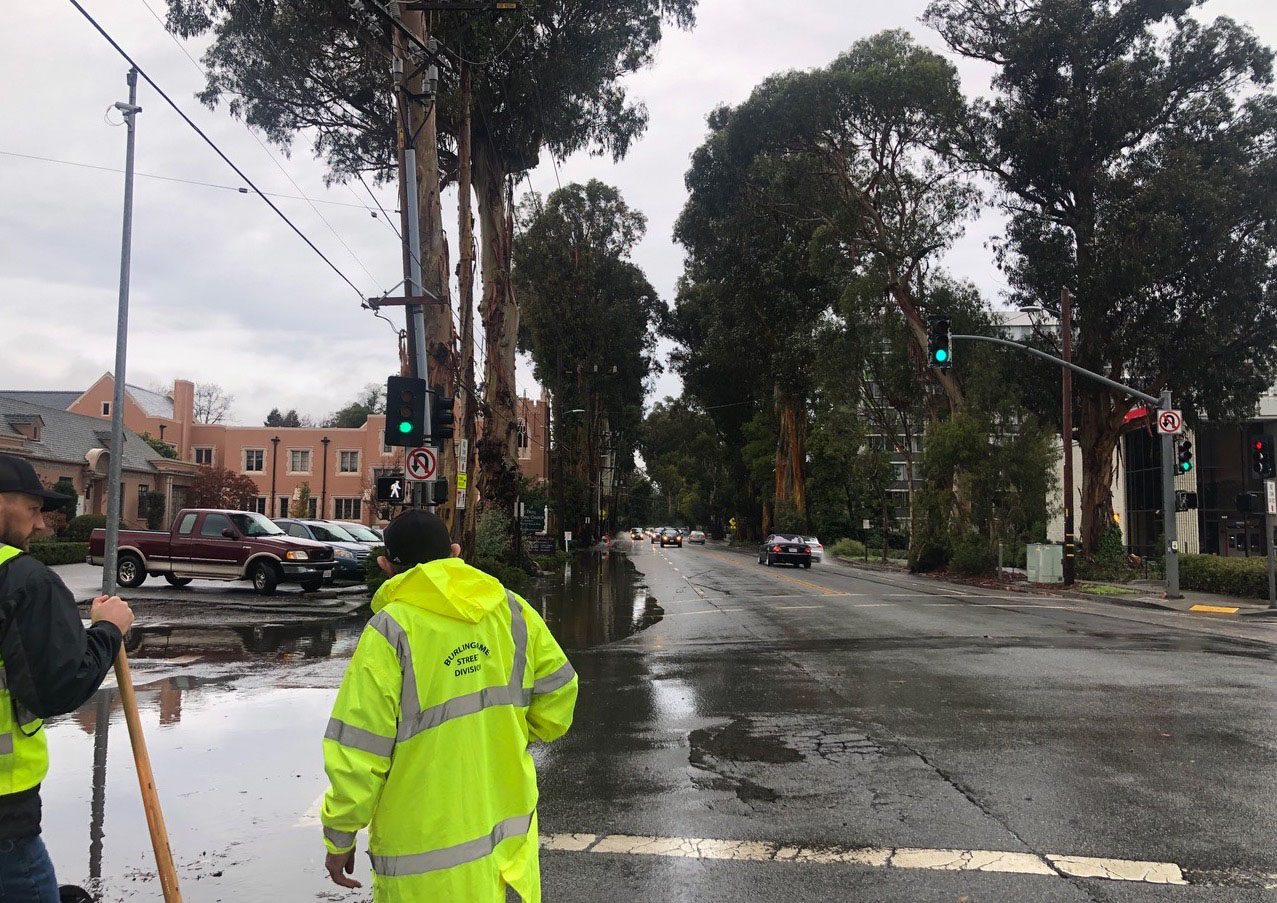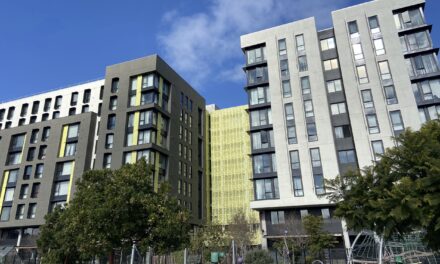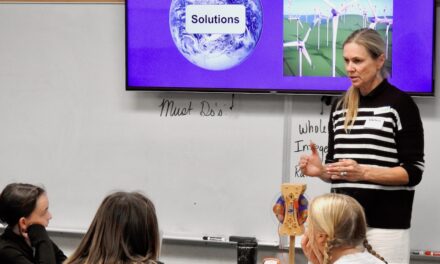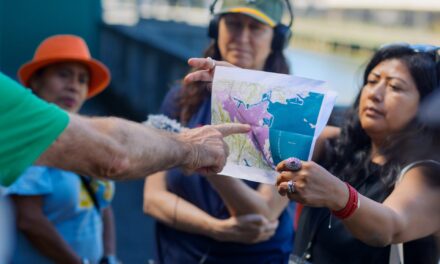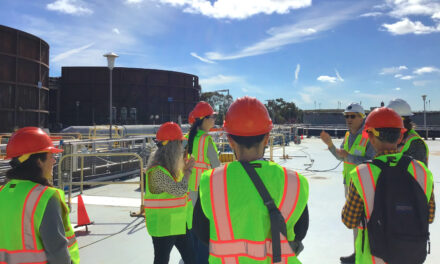A Fix for Old Drains, Old Trees with New Rainfall
Photo: Cariad Hayes Thronson
Navigating El Camino Real (State Route 92) through the city of Burlingame has been challenging — and sometimes nerve-wracking — for drivers and pedestrians alike for decades. The pavement is uneven and heavily cracked, and the massive eucalyptus trees that line the four-lane highway crowd the road, impeding sightlines and occasionally shedding branches, while their root systems buckle the narrow sidewalks. Flooding occurs during virtually every storm, thanks to an ancient drainage system and uneven pavement. Now, a CalTrans project to rehabilitate 3.6 miles of El Camino promises to remedy many of these issues, improving safety and climate resilience.
The El Camino Real Roadway Renewal Project will completely replace the pavement, including underground structures, between Millbrae and San Mateo, and upgrade sidewalks to comply with the Americans with Disabilities Act.
Although climate resilience was not a driver of the project, “the recent flooding due to atmospheric rivers re-emphasized the purpose and need for it,” according to CalTrans spokesperson Alejandro Lopez. CalTrans will install 34 new drainage inlets, modify or relocate an additional 25, and replace old drainage pipes.
The project will require the removal of up to half of the 700 trees, mostly eucalyptus and elms, within the project limits. Several eucalyptus and one elm toppled during the 2022-23 storms, and many of the trees are deemed too old or unhealthy to withstand construction-related disruption to their root systems; others need to be removed to improve sightlines or make way for sidewalk improvements.
Crews tackle flooding and debris in the project zone in Burlingame. Photo: Cariad Hayes Thronson
Approximately 250 of the trees that will be removed are part of the Howard Ralston Eucalyptus Tree Rows, which are listed in the National Register of Historic Places. According to Jennifer Pfaff of the Burlingame Historical Society, the trees will need to be replaced with different species with narrower trunks. They will also be vetted for their ability to withstand drought and atmospheric rivers. “We need to convey the period of time when the original trees were planted,” she says. “The goal is a safer roadway and sidewalk while retaining the history and character of the tree rows.”
Other Recent Posts
Martinez Residents Want More Than Apologies — They Want Protection
After a 2022 release of toxic dust and a February 2025 fire, people in the northeast Bay town are tired of waiting for safety improvements.
Weaving Fire Protection Out Of What’s Already There
A new Greenbelt Alliance report shows how existing vineyards, grasslands, and managed forests can slow wildfire and save vulnerable homes.
Fall Plantings Build Pollinator Habitats in Concord
Community groups, climate advocates and a church are coming together to plant pollinator gardens as monarchs, bees see population declines.
Newark Needs Housing, But Could Shoreline Serve A Higher Purpose?
The Bay Area needs more affordable housing, but would 196-homes or a buffer against sea level serve local needs better in the years ahead?
Learning the Art of Burning to Prevent Wildfire
In Santa Rosa’s Pepperwood Preserve, volunteers are learning how controlled fires can clear out natural wildfire fuel before it can spark.
Who Will Inherit the Estuary? Training for a Rough Future
The six-month program teaches students aged 17 -24 about the challenges facing communities around the SF Estuary, from Stockton to East Palo Alto.
Split Verdict Over State of the Estuary
Habitat restoration and pollution regulations are holding the Bay steady, but the Delta is losing some of its ecological diversity, says SF Estuary Partnership scorecard.
Volunteers Catch and Release Tiny Owls For Science
In Santa Rosa, citizen scientists capture northern saw-whet owls to help further research on climate impacts to the bird.
Antioch Desalination Plant Could Boost Local Water Supply
The $120 million plant opened this fall and treats 8 million gallons of brackish water a day, 75% of which is drinkable.
How Cities Can Make AI Infrastructure Green
Data centers fueling AI can suck up massive amounts of energy, water and land, but local policies can mitigate the impact.






